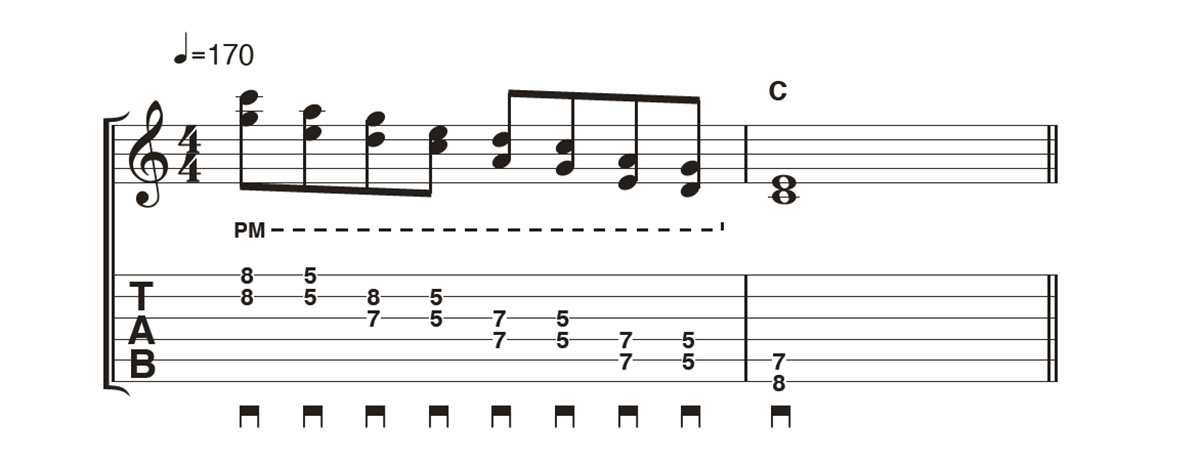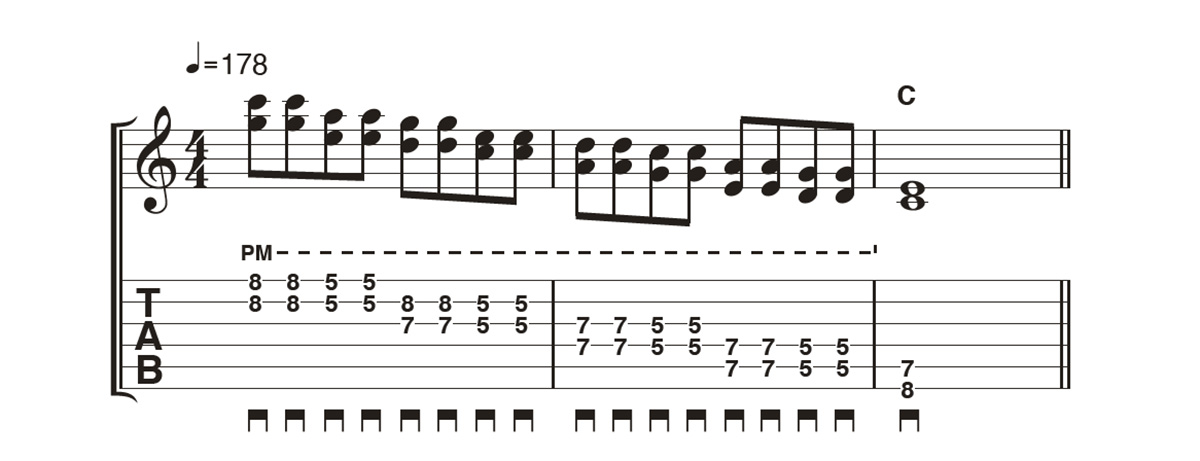
As a major player in the world of funk, Cory Wong tasks himself with placing his considerable rhythm guitar skills centre stage – something he calls “lead rhythm guitar”.
The result? Well, he delivers some of the finest, slickest and most creative funk playing you’ll hear today. And getting to that level? It takes a certain amount of creativity, and the idea is to go beyond basic chord vamps and inject something “signature” or “iconic,” some musical ideas of your own.
Here, the Minneapolis maestro takes us through some of the ways he approaches jamming around simple chords – and that’s something we could all brush up on! Using just a couple of well-known barre chord shapes, Cory outlines some creative ways to take your rhythm and phrasing to the next level.
Example 1. Single-note chord outline

Cory kicks off with a look at how a single-note funk line can outline a chord (Am7 here). He keeps a 16th-note rhythm going, with the strumming determined by the “right-hand motor staying steady.”
Listen out for muted notes (shown with Xs in the tab). Cory plays first with, then without mutes – and you can hear how sparse it is when you boil it down to just the notes. There’s no right or wrong though. Make your own parts as sparse or energetic as you like!
Example 2. Chord outline with diads

Here, Cory expands his idea by adding notes from the chord, but notice that these are just two-note shapes – no big chords to be found! But it does sound richer and more colourful, and it’s a creative idea you can employ in your own funk rhythms, or any other style for that matter.
Take a look at Cory’s fingers in our video. You’ll see he’s often spreading them fairly flat across the fretboard, muting out the idle strings so he can strum confidently.
Example 3. Chord outline with triads

Taking the idea one step further, Cory adds another string on top of the two-note shapes, which again changes the sound, and you can hear our funk maestro accenting those chords as he strums.
And, as he mentions, the notes are, by and large, from an Am7 chord and the A minor pentatonic scale (which are near identical, notes-wise). If you happen to know the scale and the chord then you have a starting point to take Cory’s ideas further.
Example 4. Harmonised major pentatonic scale

Here, Cory demonstrates how he plays the pentatonic scale lick using two notes at a time in songs like Julia. Note that he prefers the vibe of downstrokes and palm-muting.
Example 5. Harmonised major pentatonic scale 2

A development on the previous idea. As Cory says, “It sounds interesting, but really, it’s quite easy. You’re just outlining a pentatonic scale, but you’re playing two notes at the same time.”
Example 6. Dominant chord vamp

Listen out for Cory’s quick blast with a straight-strummed C7 chord. We’ve not tabbed it here because he’s talking about how to go beyond the basics of what is essentially just a strummed chord.
The riff he plays here outlines the C7 chord but with much more going on. Cory plays the most important notes from the C7, plus a few more for added colour, and not forgetting the ever-present string muting for musical punctuation and groove.
Example 7. Down the octave

A similar idea to the previous riff here, but thanks to being in a lower octave there’s a different feel. As Cory says, what’s important with a lick like this is that it’s memorable and singable – and these two riffs certainly deliver. Go back and listen to his first jam on the C7 chord and you’ll get the idea!







